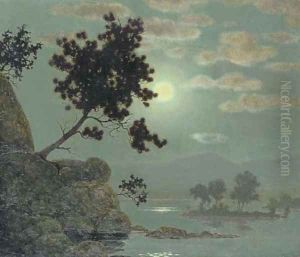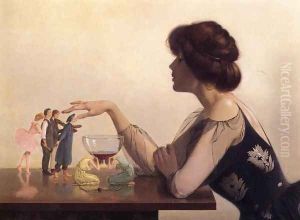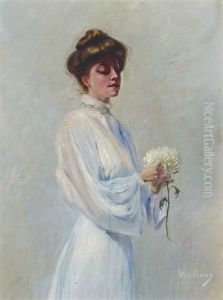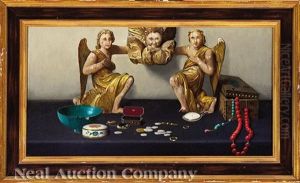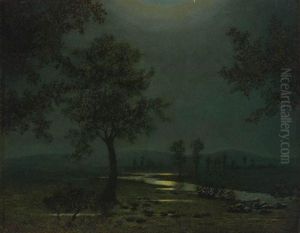Harry Willson Watrous Paintings
Harry Willson Watrous was an American painter born on December 17, 1857, in San Francisco, California. He became known for his highly detailed genre paintings and portraits, often characterized by a clever use of light and shadow and a certain whimsical or ironic approach. Watrous studied art at the National Academy of Design in New York and later in Paris under the tutelage of Léon Bonnat, a prominent French portrait artist and teacher to many American artists of the era.
During his time in Paris, Watrous was influenced by the academic and salon styles of painting. However, his career took a distinctive turn after he lost nearly all of his early work in a studio fire. This event seemed to have a profound effect on his artistic direction, and he began to develop a style that incorporated elements of Tonalism and Impressionism. He became particularly noted for his use of the 'hatch brush' technique, which involved using a series of fine, parallel lines to create texture and depth in his paintings.
Watrous achieved significant recognition during his lifetime. He was a member of the National Academy of Design and served as its president from 1933 to 1934. He also belonged to the American Watercolor Society and the National Arts Club. His work was exhibited widely, including at the Paris Salon, where he won honorable mention in 1888, and at the Pennsylvania Academy of the Fine Arts. His paintings are part of several museum collections, including the Metropolitan Museum of Art in New York.
Despite the popularity of modern art movements in the early 20th century, Watrous remained dedicated to his more traditional, realist approach. His genre scenes often contained a narrative element, subtly commenting on society or human nature. Watrous continued to paint until his later years, and his dedication to his craft made him a respected figure in the American art community of his time.
Harry Willson Watrous passed away on August 31, 1940, in New York. His legacy as an artist is marked by his skillful technique, his contribution to American genre painting, and his role in the New York art world during a period of significant transition and development.


